'First there is trust, then passion, then death': Why the 'Virgin Queen' never married
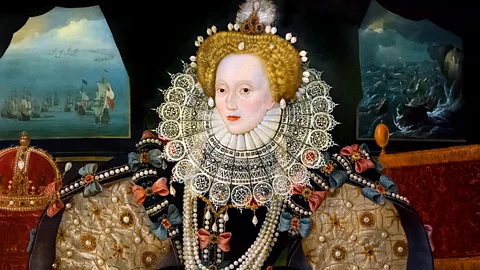 Alamy
AlamyElizabeth I, daughter of Henry VIII, is the only English queen never to have married. The iconic Tudor monarch's last visit to Kenilworth 450 years ago may hold some clues to her solo reign – as revealed in a new art installation at the castle, depicting betrayal, beheadings and an elaborate declaration of love.
On a July evening in 1575, 41-year-old Queen Elizabeth I arrived at Kenilworth Castle in Warwickshire, UK, for what would be her longest and last visit. She had given the castle to Robert Dudley in 1563 and granted him the title of Earl of Leicester the following year. Dudley was a great favourite of the Queen and is thought to have been her childhood friend. The precise nature of their close relationship was the subject of much gossip.
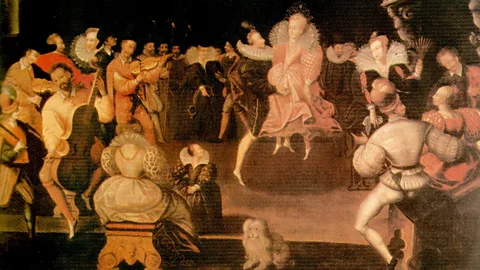 Alamy
AlamyPrior to the unmarried Queen's arrival, Dudley had given the magnificent castle a major refurb. New buildings had gone up, a new garden had been created and the estate had been landscaped. And the earl pulled out all the stops to lay on extraordinary entertainment in the form of music, dancing, acrobatics, spectacular fireworks and dramatic interludes performed by costumed actors. On the huge mere surrounding the castle, there was a moving island inhabited by the "Lady of the Lake". There was a 24ft (7.3m) dolphin that concealed musicians, and an 18ft-(5.5m) long swimming mermaid.
No expense was spared. It cost Dudley £1,000 ($1,400) a day – millions in today's money, and the whole extravaganza has been interpreted as an elaborate and expensive courtship display; the 16th-Century ruling class's equivalent of hiring a plane to fly a "Marry Me" banner. "The 1575 festivities were an attempt to woo Elizabeth – marriage is a theme in some of the events," Jeremy Ashbee, head curator of properties at English Heritage, tells the BBC. "Dr Elizabeth Goldring, who has made a detailed study of Lord Leicester, has called it 'his last throw of the dice'."
Dudley's gamble seemed to be going swimmingly, but then everything changed. The highlight of the stay was to have been a masque – or performance – on Wednesday 20 July. It never took place. Was it simply a case of bad weather preventing the event, as the official version had it? Or had the monarch got wind of the subject matter and been angered? The masque featured Diana, goddess of chastity, searching for one of her chaste nymphs, pointedly called Zabetta – a version of the name Elizabeth.
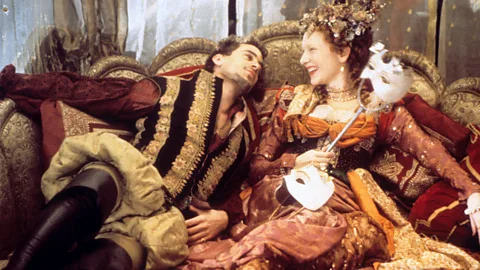 Alamy
AlamyIt concluded with a messenger of Juno, goddess of marriage, directly addressing Elizabeth, and imploring her not to follow the path of Diana but to marry instead. Dudley had a certain amount of leeway with the Queen, but this perhaps was going too far. Whatever the reason, the masque never took place, and the revelries were over. The Queen remained in her quarters for a few more days before leaving on 27 July.
'Proud and fiery'
Now, the artist Lindsey Mendick has marked the 450th anniversary of the visit by creating Wicked Game, a large sculptural installation at the castle. Wicked Game takes inspiration from ancient mythology as well as from the events of Elizabeth's visit, and the way in which she used her unwed state in her shrewd political manoeuvres throughout her 45-year reign. There are 13 different tableaux. Some are sinister, others are suffused with dark humour. The fragmented ceramic sculptures strikingly depict the Queen and those around her as animals. In the central piece, Elizabeth is a lion and Dudley is a bear. The tableaux are positioned on pieces of an exploded giant chessboard.
"Playing chess is the perfect analogy for what Elizabeth had to do to survive," Mendick tells the BBC. "I think she is incredibly interesting and that she's a great way of looking at how we treat women today. This event [that Dudley planned] at Kenilworth was meant to be this massive celebration for Elizabeth; it was meant to be decadent and enjoyable. But then also at the same time it was so loaded with something else. For powerful women like Elizabeth, refusing to marry or have children was a radical act of self-preservation and autonomy."
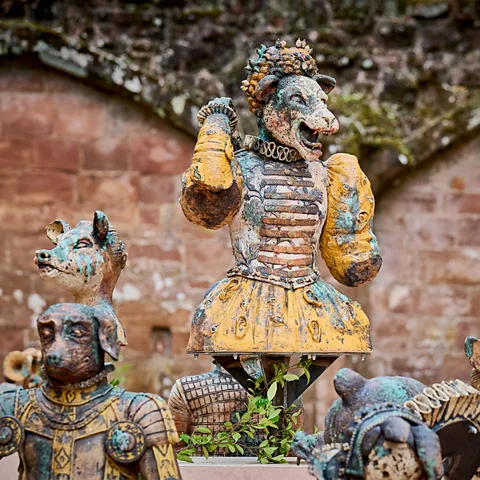 Lindsey Mendick/ Courtesy English Heritage/ Jim Holden
Lindsey Mendick/ Courtesy English Heritage/ Jim HoldenElizabeth I, daughter of Henry VIII, is the only English queen never to have married. She came to power in 1558 at the age of 25, inheriting religious, political and financial problems from her two predecessors, her half-brother, Edward VI (1537-1553), and her half-sister, Mary I (1516-1558).
Advisers and members of Parliament repeatedly urged her to marry to protect England's security. A woman ruling alone? Inconceivable. A queen needed to marry, it was believed, not just to produce a male heir in order to avoid succession disputes but also so that a man could take charge of political and military matters. The entreaties to marry were ceaseless, and numerous matrimonial candidates were suggested or suggested themselves. Elizabeth repeatedly parried, deflected and refused. Why?
'No master'
It's entirely possible that she simply found the idea of having to obey or defer to a husband – any husband – intolerable. After all, she was very well educated (she learned five languages – French, Italian, Spanish, Latin and Flemish – and had studied history and rhetoric), highly intelligent, proud and fiery. She is said to have declared: "I will have but one mistress here and no master."
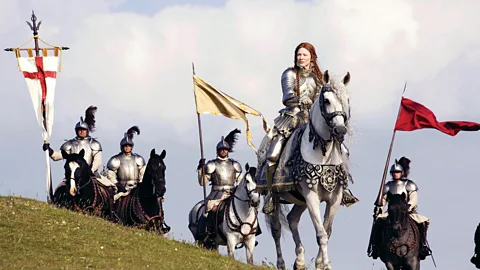 Alamy
AlamyAlso, Elizabeth knew that a woman could govern perfectly well without a man looking over her shoulder. In the summer of 1544, at Hampton Court, she witnessed the scholarly Katherine Parr, Henry's sixth wife, ruling with full authority while the king was on campaign in France. Katherine was a more than capable regent, and Elizabeth seems to have been profoundly influenced by seeing her stepmother exercising power, and accepting as her due the humble deference of powerful male ministers and courtiers.
Besides, her own immediate family had hardly furnished her with an image of the joys of marriage. Her father had her mother, Anne Boleyn, arrested on trumped-up charges of adultery and conspiracy, and then, shockingly, had her beheaded when Elizabeth was just three years old. One of Mendick's sculptures is an interpretation of this execution, showing Anne as a fox kneeling in prayer, before the executioner, who takes the form of a vicious dog.
Some commentators have suggested that Elizabeth might have been afraid of sex. Alison Weir, for example, in her book, Elizabeth, the Queen, wonders if the monarch "may have made the equation that sexual involvement was inextricably linked with death". The BBC's 2005 series The Virgin Queen portrayed "a monarch terrified of sex", according to the Telegraph. Paula Milne, who wrote the screenplay, told them at the time: "If I was asked to write a piece about a contemporary woman whose mother had been killed by her father, I would be expected to examine the psychological impact."
In fact, Elizabeth enjoyed the company of handsome men, and could be flirtatious with them. However, she had plenty of reasons to fear pregnancy and childbirth. Childbirth was a very high-risk enterprise in the Tudor era. Jane Seymour, Henry's third wife, died in childbirth, and Katherine Parr died of an illness shortly after giving birth, as had Elizabeth's grandmother, Elizabeth of York.
How Elizabeth has been portrayed
But there were political reasons, as well as personal, for not marrying. Keeping the country free from the influence of foreign powers may have been a consideration. Also, the prospect of Elizabeth's hand in marriage might have strengthened her negotiating position in her dealings with France, Spain and other nations. Meanwhile, if she'd married an English nobleman (and Dudley might have been a possibility had not his wife, Amy Robsart, died in somewhat suspicious circumstances in 1560), she would have automatically put another English nobleman's nose out-of-joint.
So she kept everyone waiting and wondering. She seems to have had an instinctive grasp of what we now call PR, and liked to present herself as wholly devoted to her realm. From early in her reign she cultivated the image of the Virgin Queen. In 1559 she declared, in response to MPs asking her to marry, that eventually "a marble stone shall declare that a queen, having reigned such a time, lived and died a virgin". At the end of Shekhar Kapur's much-loved 1998 film, Elizabeth, the young monarch is played by Cate Blanchett, who then played her again in the 2007 sequel Elizabeth: The Golden Age. In Elizabeth, she purposefully transforms herself into the Virgin Queen and, all in white, presents herself to her astonished court, announcing "I am married… to England".
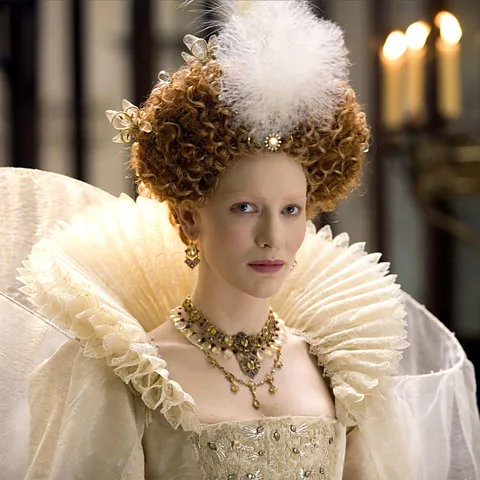 Alamy
AlamyKapur's film plays fast and loose with the historical facts, but this dialogue echoes the Queen's actual assertion, made in 1559, that she would not marry because she was "already bound unto a husband which is the Kingdom of England". Her sister Mary I – also known as Bloody Mary – had claimed something similar but had then gone off and married Philip II of Spain.
Elizabeth's decision not to marry has been a key element of depictions of her in popular culture. The connection between sex and death was made in the BBC's multiple-Emmy-winning 1971 series Elizabeth R. Glenda Jackson's Elizabeth says, in the very first episode: "I have trusted no man since the day when I was eight, and Queen Catherine Howard [Henry's fifth wife – beheaded] ran screaming along the galleries of the palace to plead with the great Henry… On every hand, men had betrayed her… First there is trust, then passion, then death."
Miranda Richardson's caricatured Elizabeth, who appears in the second season of the celebrated sitcom Blackadder, remarks in the first episode, "Everybody seems to get married except me." But in the series she uses the promise of marriage to manipulate Blackadder, and others, into doing what she wants.
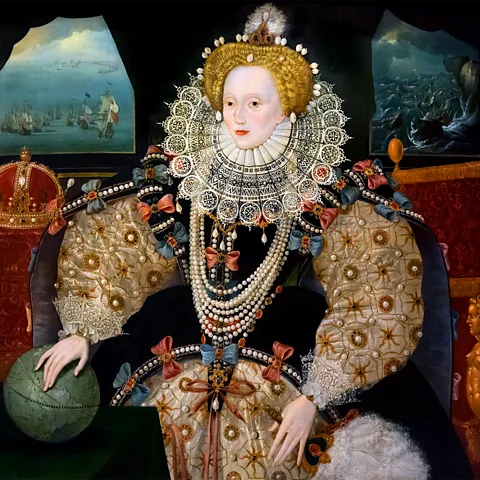 Alamy
AlamyHad the real Elizabeth allowed Dudley to think he might be in with a chance? And what did the Kenilworth visit mean for their relationship? "I don't believe that he felt humiliated by her rejection of his proposal," says Ashbee. "He was happy for an official account of the festivities to be published soon afterwards, and in his will, he stipulated that the castle was to be left exactly as it had been. I rather get the feeling that he saw 1575 as his 'finest hour'. He certainly didn't retire quietly into private life after 1575."
Elizabeth was furious with Dudley for a while when he married Lettice Knollys in 1578 – but she forgave him. When he died, in 1588, she locked herself in her room for so long that her chief adviser ordered that the doors be forced open. And when Elizabeth died in 1603, a note Dudley had sent her shortly before his death was found in a casket she kept by the side of her bed. She had written on it "his last letter".
Lindsey Mendick's Wicked Game will be on display in the Great Hall at Kenilworth Castle, Warwickshire, UK, until 31 October 2025.
--
If you liked this story sign up for The Essential List newsletter, a handpicked selection of features, videos and can't-miss news, delivered to your inbox twice a week.
